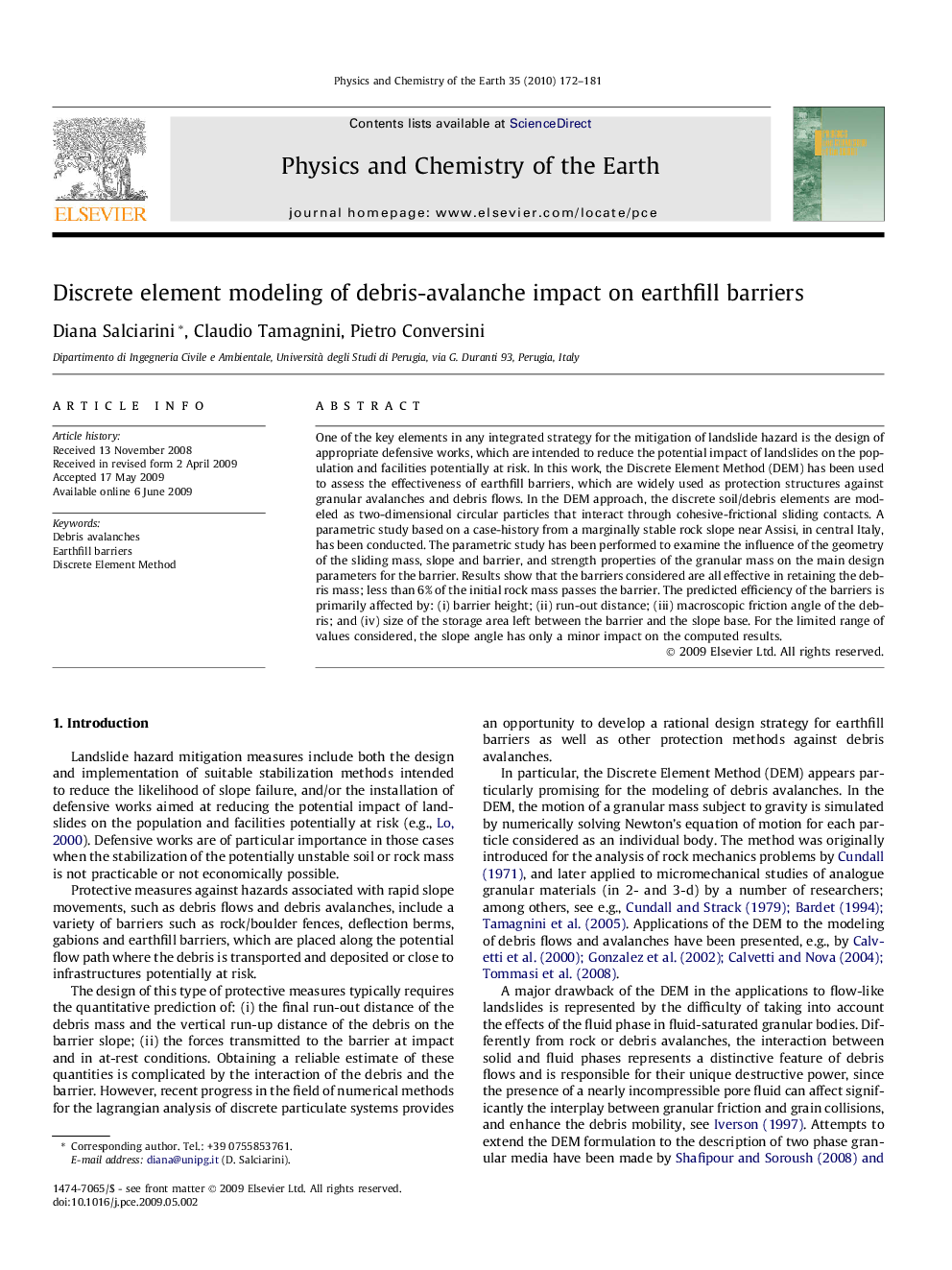| Article ID | Journal | Published Year | Pages | File Type |
|---|---|---|---|---|
| 4722151 | Physics and Chemistry of the Earth, Parts A/B/C | 2010 | 10 Pages |
One of the key elements in any integrated strategy for the mitigation of landslide hazard is the design of appropriate defensive works, which are intended to reduce the potential impact of landslides on the population and facilities potentially at risk. In this work, the Discrete Element Method (DEM) has been used to assess the effectiveness of earthfill barriers, which are widely used as protection structures against granular avalanches and debris flows. In the DEM approach, the discrete soil/debris elements are modeled as two-dimensional circular particles that interact through cohesive-frictional sliding contacts. A parametric study based on a case-history from a marginally stable rock slope near Assisi, in central Italy, has been conducted. The parametric study has been performed to examine the influence of the geometry of the sliding mass, slope and barrier, and strength properties of the granular mass on the main design parameters for the barrier. Results show that the barriers considered are all effective in retaining the debris mass; less than 6% of the initial rock mass passes the barrier. The predicted efficiency of the barriers is primarily affected by: (i) barrier height; (ii) run-out distance; (iii) macroscopic friction angle of the debris; and (iv) size of the storage area left between the barrier and the slope base. For the limited range of values considered, the slope angle has only a minor impact on the computed results.
